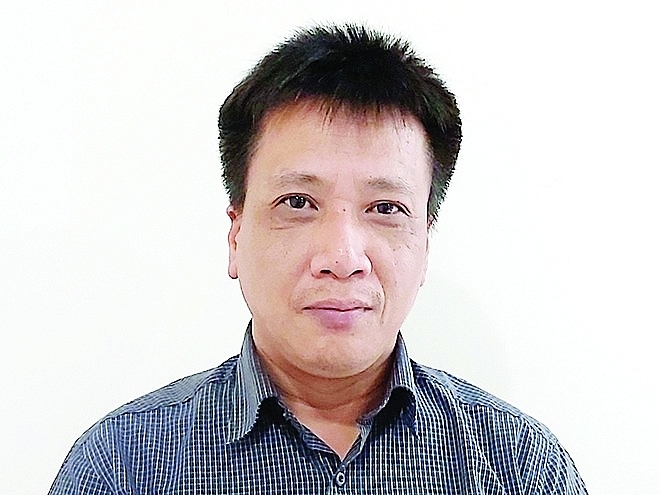 |
| Dr Tran Toan Thang. |
EU’s FDI into Vietnam accounts for a tiny proportion compared to the potential cooperation between the two sides. In your opinion, what are the shortcomings in attracting FDI from Europe?
As a new-generation FTA with a wide scope of commitments, the EVFTA is expected to promote the next wave of FTAs in Vietnam and help improve the quality of FDI projects. This is consistent with Vietnam’s orientation in the Government’s Resolution 50-NQ/TW on attracting high-quality FDI. Meanwhile, the Investment Protection Agreement between Vietnam and the European Union (EVIPA) was signed with special significance, contributing to deepening the relationship between the two sides, especially in economic trade terms, opening up great opportunities for Vietnam to increase FDI attraction from EU countries.
The implementation of EVFTA and EVIPA is important for EU FDI flows to Vietnam because the EU is currently a large and potential economic partner of Vietnam. EVFTA is a new-generation FTA with commitments beyond tariff elimination. EVFTA is expected to bring opportunities for Vietnam to attract high-quality FDI through institutional policy and investment environment reforms.
However, because the “choose-give” mechanism in the EVFTA is similar to the WTO’s similar commitments, the openness of the cooperation principle is limited. In addition, the investment structure from the EU into Vietnam is still backward, the EU itself is not an entity that is entirely rich countries, so EU investment has not formed a trend but only comes from the mechanism. Therefore, the quality of EU FDI projects in Vietnam is low compared to other countries in the ASEAN region. Therefore, the EU’s investment field in Vietnam is also quite different from the general investment trend of this bloc in ASEAN countries.
In addition, implementing these FTAs also leads to pressures and costs related to reforms of institutions and policy. At the same time, it can reduce horizontal FDI flows into Vietnam, especially when global FDI flows are declining and more selective.
The digital transformation process may also narrow the EU’s investment flows into Vietnam, especially those investing in high-value sectors, due to the change in investment objectives of multinational enterprises.
Besides the investment flow from the EU into Vietnam, with the two Agreements EVFTA and EVIPA, Vietnam should not only expect EU investment in Vietnam but should also pay attention to investment from other countries into Vietnam for export to the EU. Although I find this investment flow is more obvious and may become a trend, it is necessary to further improve the issue of upcoming forecasting impacts.
In addition to the trend of FDI shifting of countries in the EU, another challenge is also emerging. It affects not only the attraction of investment but also the market in the fluctuation of exchange rates of VND and EURO. How do you rate this challenge?
When the deposit interest rate increases, the increase in lending interest rates will affect businesses, especially when businesses are already facing many difficulties. In addition to market fluctuations in export output, changes in European interest rates also affect people’s income and consumption, reduce purchasing power, and affect EU businesses. The impact will hurt Vietnamese businesses if this lasts longer in the next quarter or the first quarter of 2023.
With the recent fluctuations in the VND – EURO exchange rate, the Government did the right thing when weighing the costs and benefits, which had to be adjusted slightly to reduce pressure on interest rates. Accordingly, it is slightly adjusted interest rates to reduce interest rate pressure. The current operating method shows a relatively slight adjustment that does not create shocks and balances interest rates and exchange rates at a reasonable level to control the situation before world market fluctuations.
Enterprises should hedge against exchange rate risk. It is important to stay calm in export and investment decisions. If we only look at the recent rapid and unexpected movements related to exchange rates, bonds, and stocks, psychological volatility will exacerbate the real market movements.
So in your opinion, how to solve the above challenges to increase FDI from the EU into Vietnam?
To solve these challenges, Vietnam needs to strengthen research, propaganda and dissemination on EVFTA and EVIPA. At the same time, institutional reform; improve the quality of the investment-business environment; complete types of consulting services and investment facilitation; training human resources and improving the quality of infrastructure.
In addition to reforming administrative procedures and improving the investment environment, the quality of human resources to meet the requirements of large FDI projects in Vietnam is also an urgent factor today, according to the report. So what does Vietnam need to do to improve the quality of its labour force in the coming time?
The reality of training in Vietnam today is at the university level, even higher than at the university, but vocational training is less. Meanwhile, high-tech manufacturing industries do not require highly skilled labor resources according to the type of research at universities or universities; they need skilled workers or technicians trained for three years in vocational schools.
Besides, vocational schools in Vietnam still train according to capacity, but they have not focused on training according to market signals and the needs of enterprises, so the quality of labour has not been appreciated.
To improve the quality of labour, in my opinion, there should be supportive policies of the State, creating a “push” for schools to improve the quality of training. For example, the State can develop research projects to see how many human resources are needed in the Vietnamese labour market by 2025 in the electronics and logistics industries to help training institutions redirect and train more closely with market demand.
Thank you very much!
